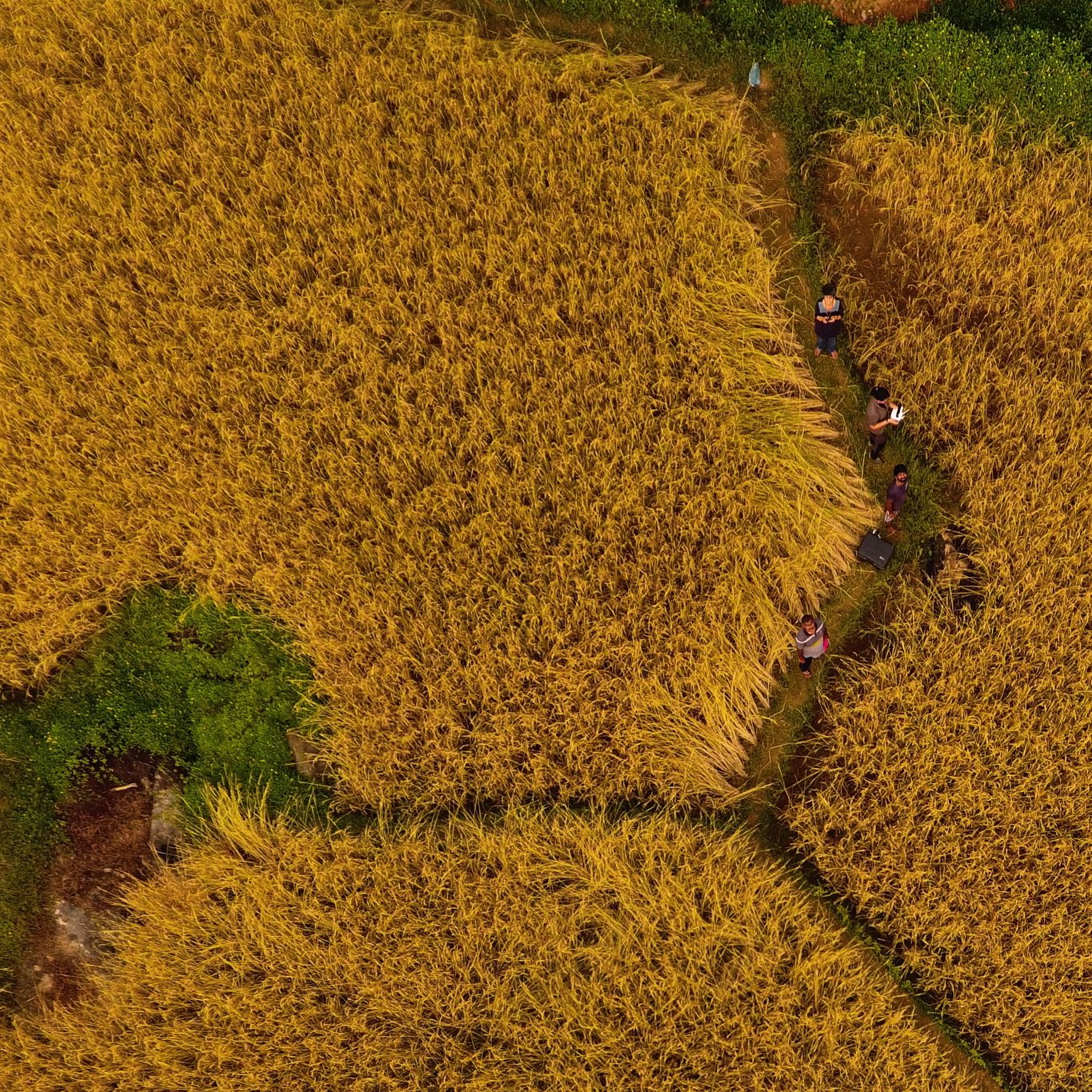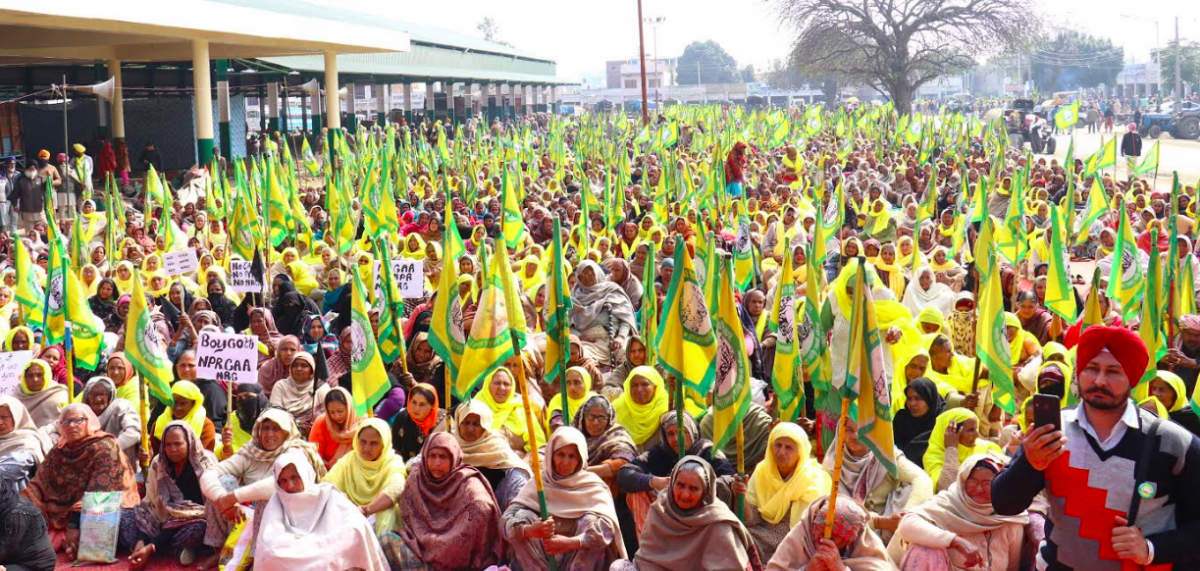To protest is to refuse being reduced to zero and enforced silence. Therefore, at the very moment, a protest is made, if it is made, there is a small victory.
— John Berger

What Does a Protest Look Like?
In the garb of the pandemic, the State has brought us to an enforced silence. Therefore, the ongoing farmers protest is not just about the farms and field, it is also about restoring the fundamental right to protest.
Berger would say that a protest is not only about the sacrifice for the just future. “it is an inconsequential redemption of the present.” What farmers protest has already done is the act of redemption of the zeal of life and resistance. Let’s celebrate that we already have a small victory against a culture of silence prevailing around us.
The protest has come after deaths, destructions and a lingering wait. It has bloomed after a gloom like a smile after tears; in a tearful smile, it has come. Cry if you feel, but smile because it is so beautiful. It is a sight to behold: Mustards are blooming on the barricades; marigolds are dancing on the borders. The kernel of the maize has found the carnal desire in the march. Full of red and green, yellow and cream, in orange and black, they are back. It has brought a full-blown smile on the face that COVID and the State have stolen from us.
March of the Mustard
They marched. From Amritsar, from Jalandhar, from Patiala, from Moga, from Taran Taran. They came marching like the march of the forest in the Macbeth. As Birnam wood started marching to the Dunsinane hill, the paddy field started marching to the Raisina Hill. It was an exchange of rose and marigolds on the borders. Red meets orange and green meets blue. Paddy field danced with water cannons and bodies with the batons. They came marching with banners and flags, with legs and lags, in pagadi, in salwar, in pyjama, and turra.
They faced the barricades. They faced the blockades. They faced the batons. They were sanitized with the teargas. But they were determined to reach Delhi. A farmer said, “we will die but we will go to Delhi.” The State tried all tricks to stop them. They may try to crush them. They may try to cut the blossoming flowers as they did in Shaheen Bagh. But they don’t have the knife to cut the poetry of life: “You can cut all the flowers, but you can’t stop spring from coming.”Whatever they do, the vasant will come. They have come prepared to celebrate Lohri and Pongal in Delhi.
Covered in green and yellow, they marched as fields are marching. They marched as crops are marching, they marched as wheat is marching. They marched as soil and sweat are marching. In the wee hours, they marched like butterflies. In the night they marched like fireflies. In the noon, they marched with the sun. In the evening, they marched with the moon. They marched singing the song of Sant Ram Udasi: Maa dharteye, teri godh nu chann hor bathere (O mother earth, in your lap, there are millions moon). They marched this time to cut their harvest in Delhi.
Perhaps they have decided: if they cannot breathe in the field, they will burn parali in Delhi to choke the breath of the city. When the field will burn then the city will not be a safe heaven. You will be choked from the smoke that engulfs the field. You cannot talk about climate change when the field is burning.
They marched. They marched with trucks and trollies. When they spread their tents, it appeared as villages are marching. With flowers and leaves, with tree and branches, with thrones of the roses, the field came marching. In the age of visuals that blind and bind us together, the march showed that the soil still is the source of colour. The colours still have names and figures, like orange, like brinjal, like maize, like mahua.
The nation obsessed with the Wagah and Attari borders came to know about Singhu and Tikri borders. The borders that exist but not recognized. The borders that separate the classes but not seen. The borders of castes that remain at large. The borders that divide the village and the city, invisible borders of the CCTV cameras and securities. The border of the 7 Lok Kalyan Marg and the parliament where loka (people) are not allowed to enter. The protest made them all visible.

What else becomes visible is that the national boundaries are not the map of the nation. Borders are there in the forms of cracks, rifts and leaks in the field—in the cracked heels of the farmers. The heel holds many maps together, more complex than a map of a nation.
A protest can be issue-based but it is never about itself. Neither Shaheen Bagh was just about the citizenship bill, nor farmers protest is just about the farms. A protest is the name of the plurality. It is the name of the multitudes. It comes from many directions. It goes to many directions. It unfolds in the unknown. It is always about many things: It is about the farms, but it is also about the women leading from the fronts. It is about the alliances between bread and moon, between necessity and desire.
March like the Minorities
Despite their differences, the farmers’ protest and the Shaheen bagh protests are special. They have brought together the assembly of the people who are usually considered a-political. The bodies of the private sphere— women, child, old have come to the public square. What were “gossips” was indeed political. The march of the Dadis (grandmothers), the walk of the grandchildren is not part of the reality show. It is the demonstration of new bodies and subjectivities. It is birth of the new politics. It is an event of the walking that will re-write the history.
A protest does not end in its immediacy; It travels its unknown paths. It marks its footprints. It leaves its shadow. Shaheen Bagh is not yet dead. It is the name of the spirit. It has appeared in Tikri border. Kangana Ranaut is right. Mahindar Kaur is indeed Bilkis Bano. They resonate each other. They greet each other. They meet each other whenever they march. It is the march of the minorities that connect them together.
A protest is the name of folding, unfolding and holding of bodies together. It is the name of the assembly that exists outside of the parliament. It is about saving, what Berger says, ‘the present moment, whatever the future holds.’ It is also about the reclaiming the past, but not the glory of the war and conquest, but of the dissents and discontents.
A protest is the name of the critical encounters. The encounter that can lead to the injury. The encounter that can lead to birth and death. The encounter that can be termed fake—like the fake encounter. A protest is the name of the possibilities that holds our fate. A protest is a site where politics is enunciated: principles are agreed, solidarity is formed, alliances are forged. It is about the sit-in of the bodies and the setting of the ideas in an out-and-out experiment. You fall, you fail, but you rise and protest.
A protest posits the precarious condition of Life. Do you know in which condition one come out in the time of COVID? When you have an emergency, when you cannot breathe. When you don’t have time to hear Amitabh Bachchan’s dramatized speech, when you don’t have time to dial the designated number. When you know that they don’t have treatment for your illness. If there is something equally precious to life that is love and protest. And both are banned, and therefore this protest is so special.
A protest spills out inks on the smooth black and white surfaces of the history. History is not black and white. It is not a sheet of paper lying in the archives. History is a grain of wheat. It has the colour of mustard, green and yellow but it can turn red and black when it seeds. “I protest” is not a simple utterance. It is the name of politics. It is a cut into history. It is a cease, it is a break, it is a newness; it cannot become normative. A protest is the poetry of life. It is an utterance unparalleled. I protest is the only authentic relation of the politics—pure and uncontaminated.

Any movement will have its weakness and shortcomings but let’s celebrate the spirit of the march that has laid the siege of Delhi. Citizens denied laying the siege, an indefinite blockade that compels the power to come to the table. That siege has become seditious and protest anti-national in the implicating eyes of the state.
It is not the market slogan of performance or perish that will re-create life. It is the Protest or Peril. It is the insistence of politics. It is the resistance of the body. It is coming of the assembly; it is formation of the alliances that will define rights and democracy. Protest, protest, protest…inside, outside, in households, in the streets; protest wherever you have the figure of authorities, protest against the imposition, protest against the curfew life. Protest for the life and the freedom of mind.




